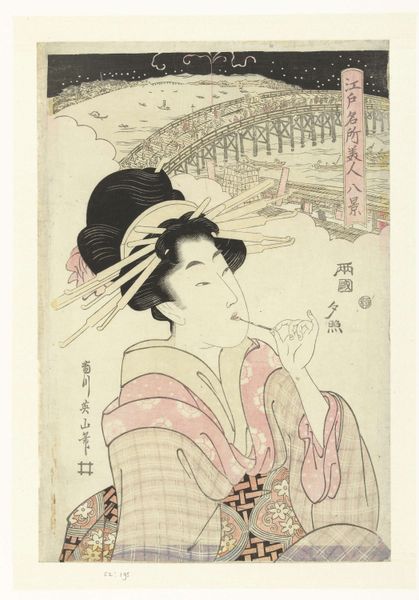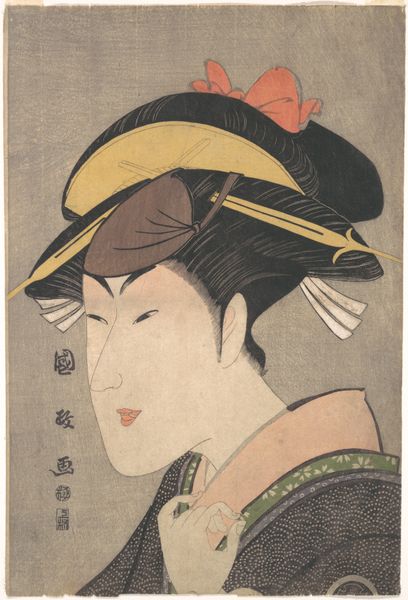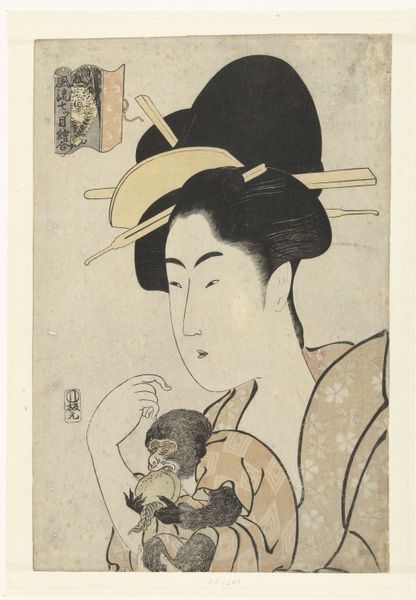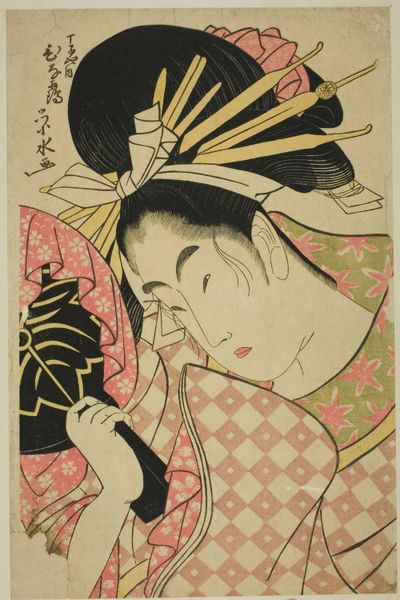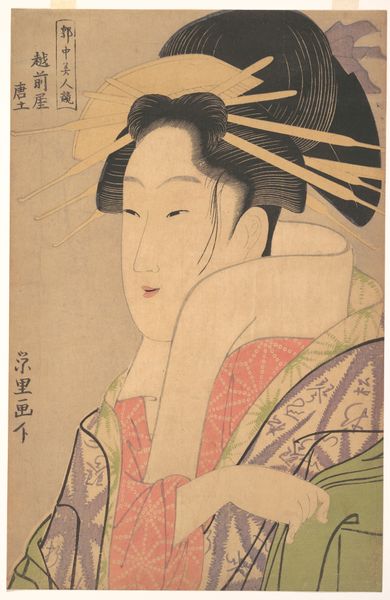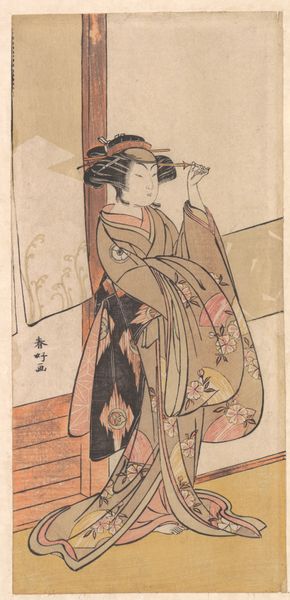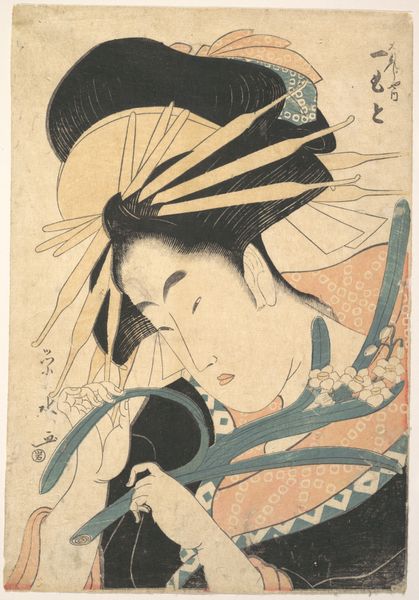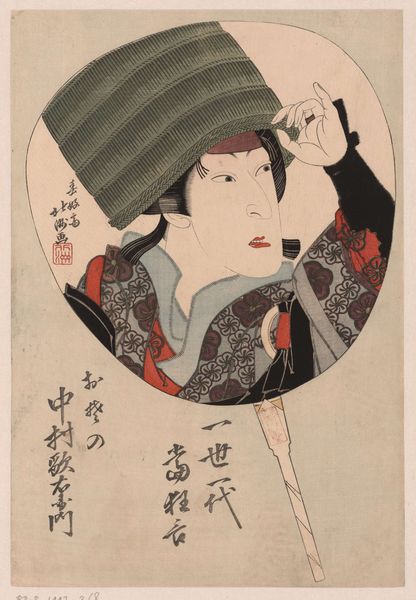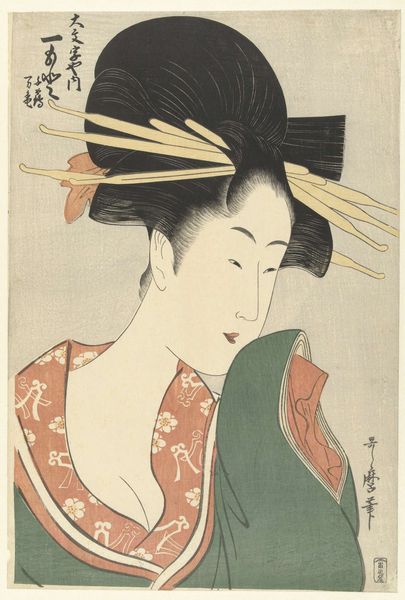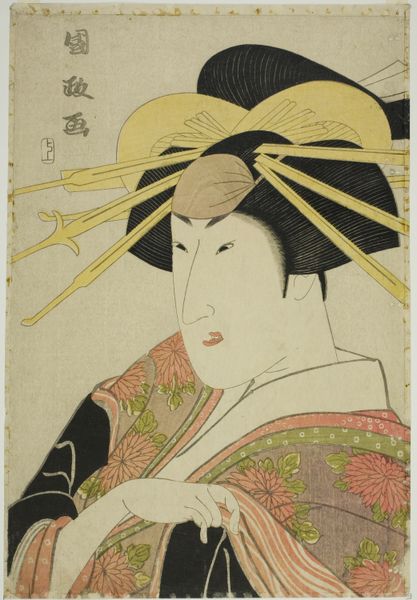
Busteportret van de courtisane Shinowara uit het Tsuruya huis. 1795 - 1800
0:00
0:00
print, woodblock-print
#
portrait
# print
#
caricature
#
asian-art
#
caricature
#
ukiyo-e
#
woodblock-print
Dimensions: height 364 mm, width 254 mm
Copyright: Rijks Museum: Open Domain
Editor: Here we have Kitagawa Utamaro's woodblock print, "Busteportret van de courtisane Shinowara uit het Tsuruya huis," created sometime between 1795 and 1800. I find her expression so intriguing, almost aloof. How do you interpret this work? Curator: Indeed, it's the subtle narratives embedded in such portraits that truly captivate. Ukiyo-e, the "pictures of the floating world," often functioned as visual chronicles of their time. The courtesan, Shinowara, is presented not just as an individual, but as a symbol of feminine allure and the elaborate social rituals surrounding the pleasure quarters. Her almost exaggerated coiffure, along with the visible hairpins, speak volumes about status and beauty ideals. Does the angle of her hand adjusting the hair ornament suggest anything to you? Editor: Maybe she's aware of being watched, carefully curating her image? Is it supposed to be an intimate moment, made public through the print? Curator: Precisely. The hand's gesture creates an intriguing tension—an intimate act made public. The repetition of patterns in the robe—geometric and floral—enhances her presence, rooting her both in the physical world and a stylized artifice. The print embodies cultural memory—how societal expectations shaped identity, visually recorded and disseminated through art. Do you think the caricature enhances or detracts from her beauty? Editor: I initially saw it as unflattering, but now it feels like a knowing wink, acknowledging the constructed nature of beauty and fame. Curator: Ukiyo-e prints democratized art, carrying emotional and cultural weight far beyond the elite circles. What begins as a representation of an individual transforms into a larger social reflection, which then morphs and is continuously reinterpreted. The narrative surrounding the piece is just as important as the image itself. Editor: I never considered the extent to which cultural memory plays a part in such visual storytelling. It really gives a richer appreciation of Utamaro's world!
Comments
No comments
Be the first to comment and join the conversation on the ultimate creative platform.

